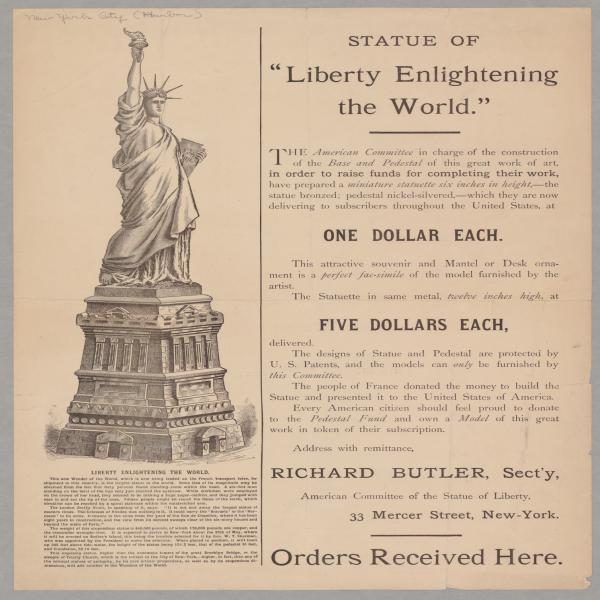Call for subscriptions to Liberty's pedestal
Original

Background Notes
"Liberty Enlightening the World," the statue that is today more popularly known as the "Statue of Liberty," was a gift from the French to the people of the United States. The statue was to be given to the United States on the occasion of its centennial in 1876, and French sculptor Frédéric Bartholdi was commissioned to design the gift. Bartholdi originally planned for the sculpture to be completed and presented to the U.S. on July 4, 1876, in time for the centennial. However, construction was delayed and only one small part of the statue was ready for the Centennial Exposition in Philadelphia that year - the right arm and the torch. Attendees at the Exposition could visit the arm and torch, and they could pay to walk up and visit the torch's balcony.
While the French financed the statue, it was up to the Americans to pay for the pedestal on which it would reside. A variety of fundraising activities took place, including asking Americans for donations or "subscriptions" to the pedestal. This broadside calls for Americans to pay a subscription fee to the pedestal, and in return, they would be sent a small replica of the statue as a keepsake. An American architect, Richard Morris Hunt, designed the pedestal; the original design for the pedestal was modified when it was built.
The statue was made of bronze and was originally brown in color, before turning green from exposure to the elements. Construction of the statue and the pedestal was completed in 1886, ten years after it had been meant to be unveiled.